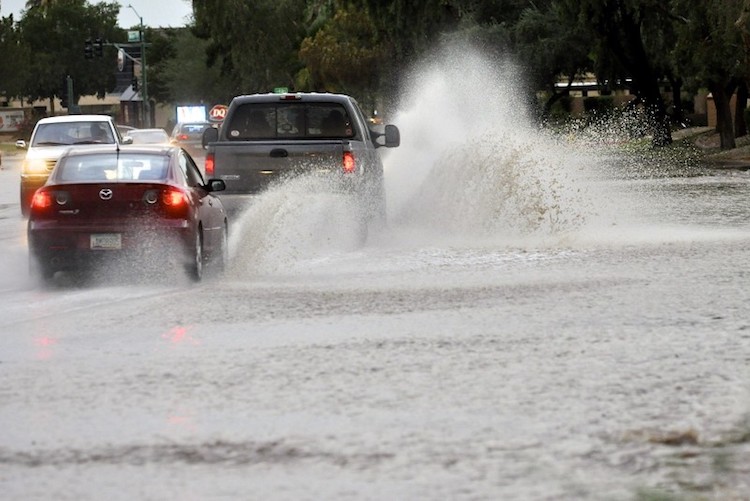- Home
- The Feature
- Prepare For Latest Round of Monsoon Storms, Potential Delays

Prepare For Latest Round of Monsoon Storms, Potential Delays
The Arizona monsoons are not finished yet! ADOT is warning motorist to be ready for wet highways, possible flooding and debris.
As the National Weather Service forecasts another round of monsoon storms in Arizona this week, drivers should use extreme caution and make plans to avoid hazardous conditions that heavy rainfall could trigger on roadways across the state.
While the National Weather Service has issued a Flash Flood Watch for all of Arizona during part of Tuesday and Wednesday, forecasters expect especially heavy rainfall in southern Arizona and in the Tonto Basin. One additional area of concern where heavy rain is expected is near Globe, where runoff from the Telegraph Fire burn scar makes highways such as US 60 vulnerable to flash flooding, debris flows or sudden closures because of damage.
The forecast calls for up to 4 inches of rain in the wettest parts of Arizona, with isolated storms producing rain as early as today, Monday, Aug. 30. However, even modest rainfall could lead to flooding in areas where recent storms have saturated the ground.
ADOT maintenance crews across the state have been preparing for the latest storms by clearing debris from drainage systems and checking the more than 55 pump stations along Phoenix-area freeways. Also, crews have staged heavy equipment in areas prone to flooding for faster response times.
ADOT is in close contact with the National Weather Service to get updated forecast information and prepare to respond to areas where flooding or other adverse conditions may affect safe driving conditions.
The Arizona Department of Transportation urges drivers to pay close attention to weather forecasts and to be ready for the severe weather associated with the monsoon season.
ADOT asks motorists to keep these tips in mind:
- Don’t risk crossing a flooded wash, even if it doesn’t look deep. Even a few inches of running water poses a serious risk.
- Stay alert in areas prone to falling rocks. Runoff can loosen rocks and boulders from slopes above roadways.
- Don’t drive around “Road Closed” signs. You risk your life and face being cited under state law.
- If traffic lights are out, treat an intersection as a four-way stop.
- Inspect your windshield wipers and replace them if necessary.
- Reduce your speed and maintain a safe distance between your vehicle and the one in front of you.
- Avoid sudden braking, which can cause you to slide on wet pavement. To slow down, take your foot off the gas pedal and brake slowly.
- Consider delaying nighttime travel during storms, as the rain can reduce visibility and make it difficult to spot rocks or other debris.
- Use extra caution traveling in areas where recent burn scars leave highways more vulnerable to flooding, debris and other damage.Other safety tips for driving in rainstorms are available at azdot.gov/monsoons.
Drivers also should remain prepared for dust storms and strong winds during summer monsoon weather. In almost no time, blowing dust can drop visibility to zero and leave drivers with little or no time to safely avoid this hazardous situation. Keep in mind these blowing dust safety tips:
- If you encounter a dust storm, immediately check traffic around your vehicle (front, back and to the side) and begin slowing down.
- Don’t wait until poor visibility makes it difficult to pull off the roadway safely; do it as soon as possible. Completely exit the highway if you can.
- Don’t stop in a travel lane or in the emergency lane. Look for a safe place to pull completely off the paved portion of the roadway.
- Turn off all vehicle lights, including your emergency flashers. You don’t want other vehicles approaching from behind to use your lights as a guide and crash into your vehicle.
- Set your emergency brake and take your foot off the brake.
- Stay in the vehicle with your seat belt buckled and wait for the storm to pass.
- Drivers of high-profile vehicles should be aware of changing weather conditions and reduce speed.
More information on dust storm safety can be found at PullAsideStayAlive.org.
